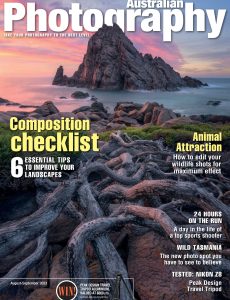
Australian Photography – August-September 2023
English | 68 pages | pdf | 33.6 MB
Welcome at Australian Photography Magazine August-September 2023 Issue
In this month’s AP we feature a story by wildlife photographers Steve and Ann Toon that lifts the lid on how they edit their award-winning wildlife images. I asked Steve and Ann to write it for us as I’ve always admired their approach to editing. For the Toons, edits should be subtle and enhance what’s already there, rather than making the edit itself the star of the show. For wildlife photography this is obviously important from an authenticity perspective, but it’s also valuable from a believability perspective as well.
In the last few years, image editing has become much easier. For most photographers the days of creating intricate layers in Photoshop are largely gone, and while some of this is down to companies like Adobe targeting more casual users by simplifying tricky techniques like masking, it’s also a product of how more user friendly the tools are and how widespread the education is to use them. Today, editing images like the one above is infinitely easier to do than it would have been when I captured the shot back in 2017.
At the same time, it’s hard not to think our tolerance for heavy-handed editing is changing. In my mind, it’s entirely possible that as AI produced work becomes the norm and exotic fantasy-style imagery becomes more
commonplace, we might start to see a gradual rejection of heavily manipulated images, such as what we saw with the rise and fall of HDR as an editing style in the mid 2010s. There’s already a growing wariness of all photography out there, and the increase in AI generated work seems like it will only amplify this further.
Part of the challenge is that it’s become common for photographers to produce images that dramatically blend exposure and focal length to create something that can easily go from grand landscape to Roger Dean album cover with just a few adjustments. We all have a different position on what we think is too much editing, but this is also one of the joys of photography – choosing how far you want to go with your work and experimenting with the tools at our disposal.
Ultimately, I don’t think it’s possible to draw a hard line in the sand and define what is too much when it comes to editing – as a form of creativity its simply too fluid and too much a product of personal preference to define. But I will say the images I’ve always enjoyed best are where the hand of the editor remains hidden, but their work is clear to see.
MIKE O ’CONNOR , Editor
Download from:
One Response to “Australian Photography – August-September 2023”